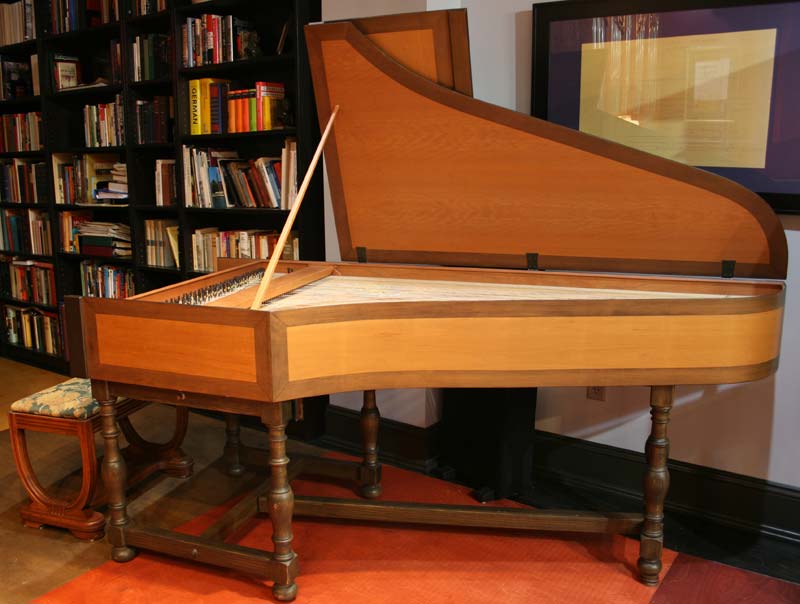 The lute-harpsichord
The lute-harpsichord

The Lute - Harpsichord
A
hybrid keyboard instrument with origins in the Renaissance and
Baroque Periods, the Lautenwerk (lute-harpsichord) is
strung with gut, and is designed to resemble the tonal
characteristics of the lute. J.S Bach is known to have taken a
particular interest in the Lautenwerk. In fact, in
the late 1730's, the noted builder Zacharius Hildebrandt constructed
one according to Bach's own specifications. There were two
such instruments listed in Bach's estate at the time of his death,
and certain of his compositions which do not fit comfortably into
either the lute or harpsichord repertoire, may have been written
with the Lautenwerk in mind.
The
Lautenwerk has been largely neglected in recent decades,
despite the tremendous interest in performance on period
instruments. This is largely due to the fact that, although
several important eighteenth-century harpsichord makers are known to
have produced instruments of this type (Fleischer, Hildebrandt, and
Johann Nikolaus Bach among others), none are known to be
extant. For this reason, the design of Willard Martin's
instruments, the first of their kind to be built in North America,
relies heavily upon written descriptions dating from that period,
such as that found in Adlung's Musica mechanica organoedi
(Berlin, 1768).
Although
the greatest interest in gut-strung harpsichords seems to have been
exhibited by eighteenth-century German builders, numerous references
dating from the early years of the sixteenth century through the
final years of the eighteenth century tell us that these instruments
were also known in England, France, Italy and the Low
Countries. In the inventory of the musical instruments owned
by the Duke of Chandos in 1720, one finds "a harpsichord with gut
string, made by Mr. Longfellow, of Pembroke Hall, Cambridge."
In Diderot's Encyclopédie of 1778 we learn that "Two
hundred years ago...the strings were of gut and consequently the
tone was sweet and soft...One still finds a few of these old
harpsichords in Paris and in the large cities of the Low Countries
and Germany." According to the Encyclopédie méthodique,
Musique (Paris, 1791), the Italian harpsichord builder Farini
"mounted some of his harpsichords with gut strings. There are
still some of them in several Italian cities which attest to the
advantage of these strings over those of iron or copper for the
quality of tone."